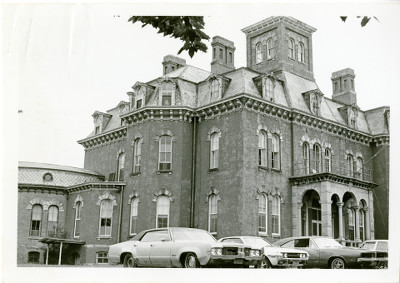
Photo by Richard Meams, courtesy of the National Park Service.
Introduction
Debates over what constitutes health and sickness have shaped LGBTQ history, identities, community building, and political activism in the United States since at least the nineteenth century. Deployed by mainstream medicine and utilized by sexual and gender minorities, “health” has fueled, reinforced, and challenged ideals of sexuality and gender, particularly as they have intersected with perceptions of race, class, ability, morality, and citizenship. In LGBTQ history, health has always meant more than simply charting rates of various illnesses and treatments, as the concept has been so crucial in defining and redefining LGBTQ people and communities. Consequently, a catalogue of LGBTQ health-related historic places extends far beyond the typical confines of health sites so that prisons and asylums, bars and bathhouses, city streets and parks, hotels and conference centers, government buildings and corporate headquarters prove equally important to the map of LGBTQ health history as do clinics, hospitals, and laboratories. Read more » [PDF 2.1 MB]
The views and conclusions contained in the essays are those of the authors and should not be interpreted as representing the opinions or policies of the U.S. Government. Mention of trade names or commercial products does not constitute their endorsement by the U.S. Government.
Part of a series of articles titled LGBTQ America: A Theme Study of Lesbian, Gay, Bisexual, Transgender, and Queer History.
Last updated: August 11, 2017
